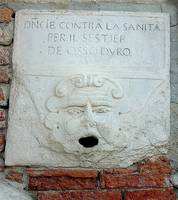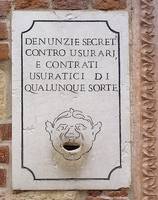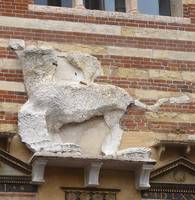Anonymous tweets: essential for protest against oppressive regimes or the safe refuge of trolls and people who make trouble for fun? The Republic of Venice confronted this problem too, and they came up with the Bocca di Leone, or ‘lion’s mouth’, a hole-in-the-wall box where citizens could post denunciations of their foes and neighbours. The illustration at the top on the left shows the Bocca di Leone on the Zattere, placed there for ‘denunciations against public health abuses in the sestiere of Dorsoduro’. There are few surviving bocche in Venice today. The most famous is in the Doge’s Palace. Most of them were destroyed by Napoleon, in his mania for altering the world order, to underline the fact that Venice’s autonomy was no more and that she was subject to the laws of Napoleonic France.
Commentators have often used the Bocca di Leone as an illustrator of how sinister the workings of Venetian justice and government were. But in fact the inquisitors of the republic were circumspect in their treatment of anonymous defamations. A good blog about this can be found at bit.ly/Mw0E48.
The other two illustrations show a surviving bocca in Verona, which elected to join the Venetian republic in 1405. It invites ‘secret denunciations against usurers and usurious contracts of any sort’. It is placed beside the door of the old Palazzo della Ragione. Above it once proudly stood the Venetian lion—until Napoleon’s men hacked it to death.









